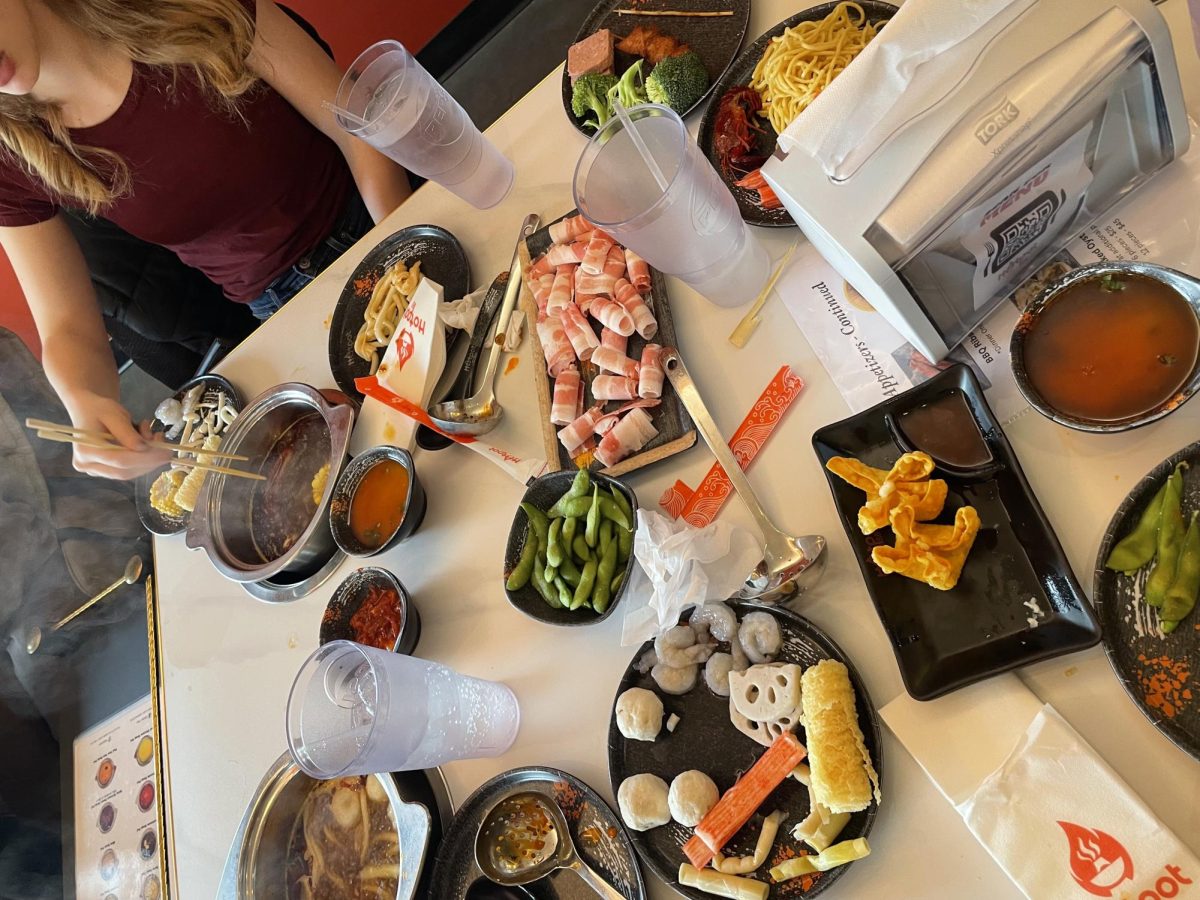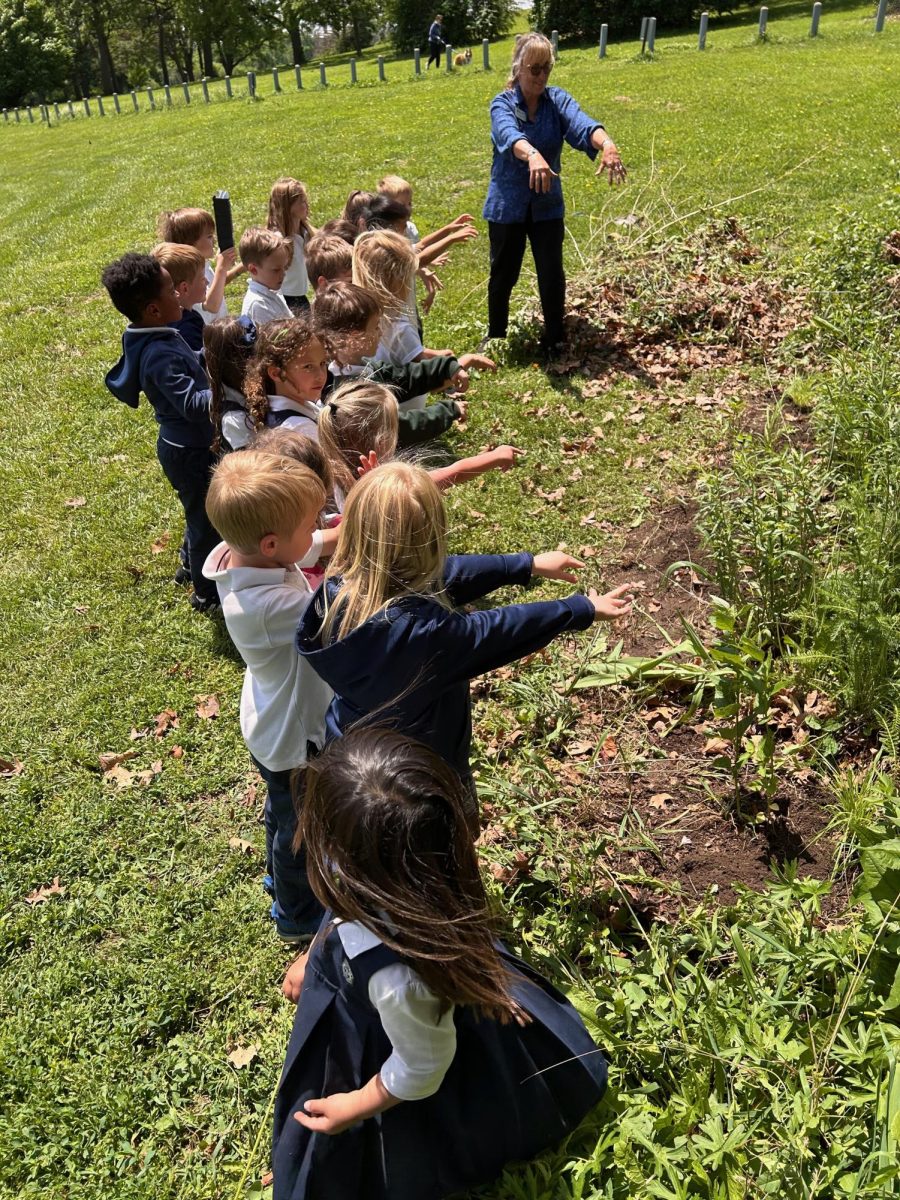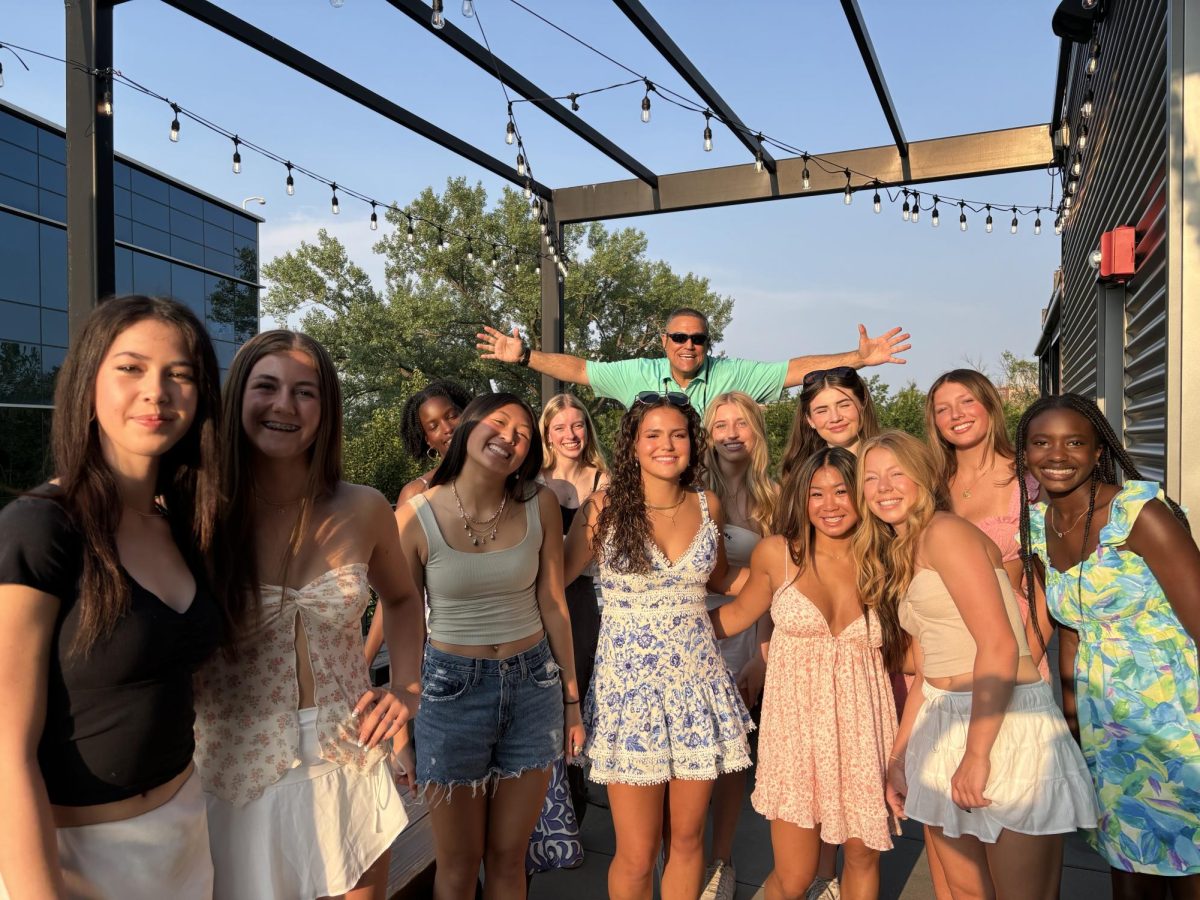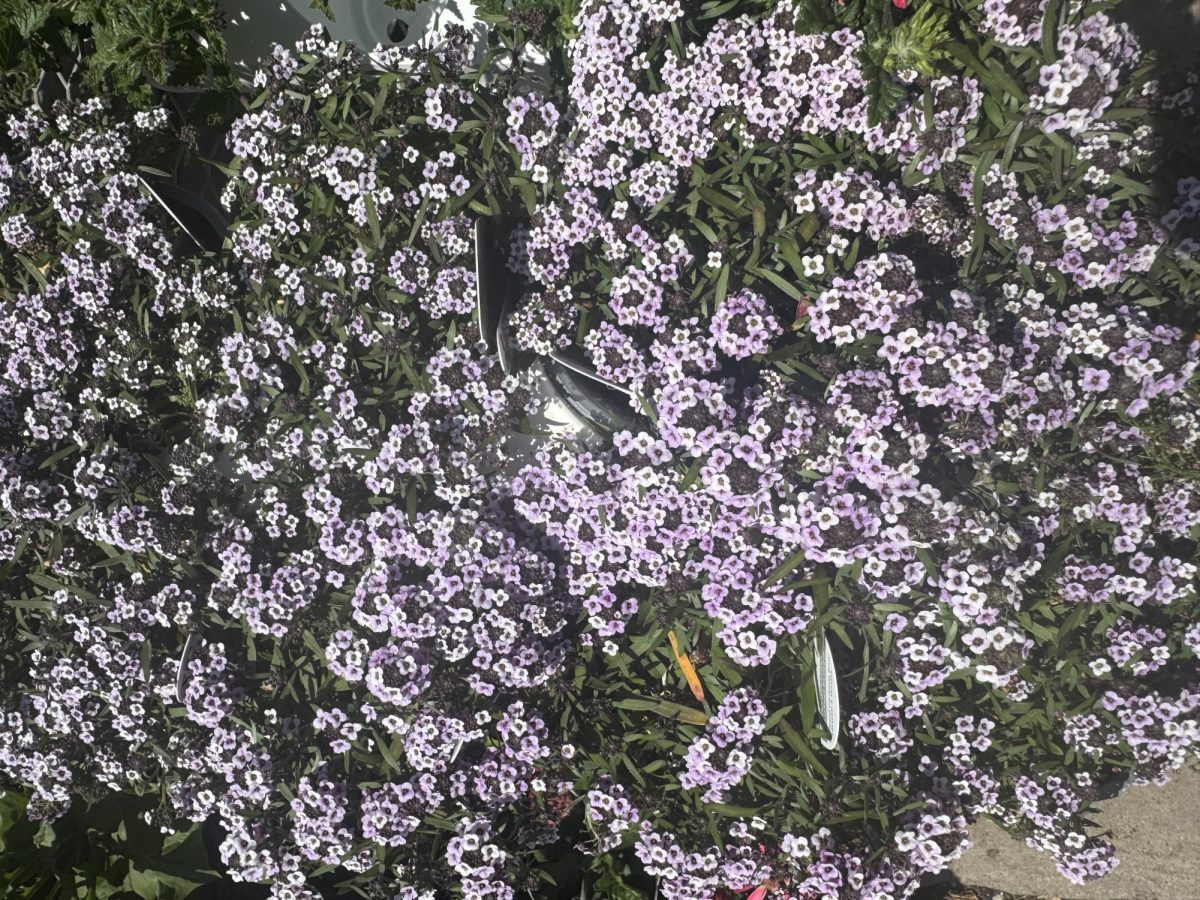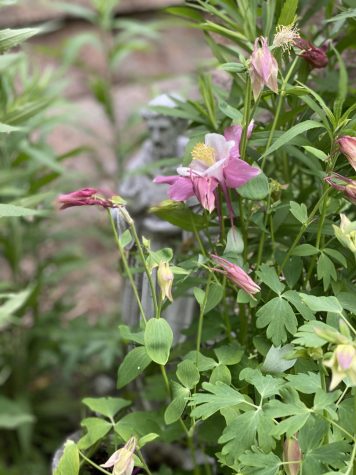Growing Good
Brownell Talbot’s vegetable garden offers opportunity to cultivate healthy food and positive collaboration
Students from Early Years, Middle School, and Upper School all work together to prepare the garden beds in early May.
With pleasant spring weather finally arriving, faculty, staff, and students are beginning work on the garden plots that sit just west of the science wing. Upper School biology teacher Mr. Sauer has been the lead faculty member of the BT gardening team for three years now, and he’s very happy with how the garden has improved in that time. “This part of the campus used to be a mess,” he said during a recent interview, “but now it looks great.” Among the upgrades that have taken place to the garden under Mr. Sauer’s care is clearer organization of the garden plots, more attention to weeding and mulching, a well-maintained watering schedule, and greater effort to get students involved.

For all of the BT faculty and staff who work on the garden, student involvement is the most important component. The garden is one of the few activities on campus that brings together students and faculty of all grade levels, from Early Years to Upper School. In the spring, students and faculty work together to prep the garden plots and plant vegetable seeds and seedlings, plantings that include everything from tomatoes and peppers to carrots and potatoes.
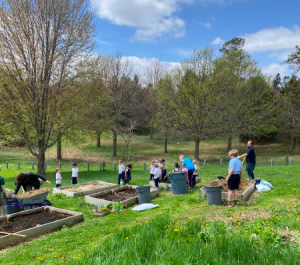
Over the summer members of the faculty and staff gardening team take turns watering all of the plots, as well as making sure that their individual plots are weeded. The first harvest typically occurs in late spring or early summer, as some of the leafy greens—like kale and chard—are the first to mature, and they can be harvested routinely throughout the season if kept watered and relatively cool. June is also a time when familiar veggies like broccoli, carrots, and onions are ready to be harvested, and as June turns to July the first tomatoes and peppers begin to take shape. Both of these vegetables, along with eggplants and pole beans, will produce well into the fall, especially if the weather stays warm, and represent a large amount of the food that is taken from the BT garden.

A handful of the plantings take almost the full season to mature, so things like pumpkins, squashes, and potatoes can be harvested after students have arrived to begin the next school year. Given that early fall is the most bountiful time for the garden, for the past couple of years the gardening team has made an effort to donate surplus produce to area food banks, including those that partner with area nursery Mulhal’s, from which much of the materials used for the garden are purchased.
Looking to the future, the gardening team has a few projects in mind, and they’re always on the lookout for possible funding opportunities that would help add useful resources, such as a drip irrigation system or compost bin, both of which would help make the garden more sustainable and less energy intensive. Mr. Sauer and Dr. Low have also been looking for ways to create a “pollinator corridor” between the garden and the habitat restoration behind the chapel, as facilitating a pathway between the native wildflowers, grasses, and shrubs of the pollinator habitat would be mutually beneficial for the garden. With as many different varieties of vegetables that have been planted, and the wide range of seasonality for their growth and maturation, getting as many pollinators as possible to visit the site is essential for ensuring that the garden thrives for many years to come.
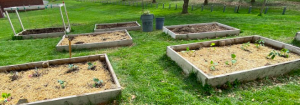
If students of any grade level are interested in helping out with the garden, reach out to Mr. Sauer or Dr. Low, as they could always use an eager set of hands to plant vegetables and pull weeds, as well as help water throughout the summer, and of course harvest throughout the late summer and fall.

Fruzsina Roka is a senior who has been at Brownell Talbot for three years. She joined Verbatim three years ago, but has had a presence in several other...





